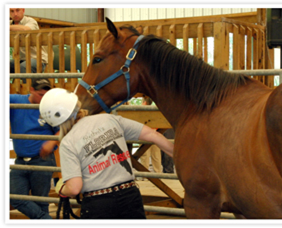
Vol. 7, No. 7, July 2011 |
 Printer-Friendly PDF Version Printer-Friendly PDF Version |
2011 Agroterrorism Preparedness Classes
FDACS’ Office of Agricultural Emergency Preparedness collaborates with several training partners to offer DHS-certified courses in Florida. All courses are open to United States citizens and are free of charge through DHS grant funding.
Training partners include the Western Institute of Food Safety and Security at the University of California-Davis (WIFSS), the Center for Agriculture and Food Safety and Preparedness at the University of Tennessee-College of Veterinary Medicine, the University of Florida-Institute for Food and Agricultural Sciences, and the Regional Domestic Security Task Forces.
WIFSS-PRESENTED COURSES
AWR 151 – Understanding the Dangers of Agroterrorism
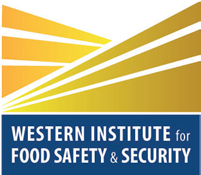
A ½-day introductory course (8:00-1:00 with one hour for lunch) on the topic of agroterrorism, aimed at raising awareness of the need to identify and defend against pathogens, chemical and biological contaminants, and other hazards that affect the safety of the foods we eat. The course stresses the importance of responding to incidents of intentional contamination as well as natural disasters using the “all hazards” approach. (This training has been approved for 3.5 CEUs for Certified Environmental Health Professionals.)
Wednesday, July 20
Daytona Beach
Volusia County Health Dept., Conference Room 516C
1845 Holsonback Dr.
Thursday, July 21
Ft. Lauderdale, FL (Davie) NOTE: Class is now closed to registration!
Institute of Public Safety Broward College, Central Campus
3501 SW Davie Rd. (Portable #404, just south of building #22)
To register for an AWR course or for more information, click on the following link: http://dhs.wifss.ucdavis.edu/agroterrorism/classes/classesbydate.php.
UNIVERSITY OF TENNESSEE-PRESENTED COURSES
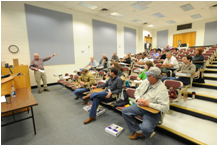
PER 259 – Sharing Information and Intelligence Related to Food Importation and Transportation
A 1-day course (8:00-5:00 with one hour for lunch) to prepare participants to utilize and implement effective sharing of information and intelligence to enhance food safety and security related to food importation and transportation. This course is targeted for law enforcement, state Fusion Center personnel, emergency managers and responders, extension, public health, food and agriculture professionals, the transportation industry and federal, state, local, tribal and regional officials. (This training has been approved for 3.5 CEUs for Certified Environmental Health Professionals.)
Jacksonville
At the FDLE facility, 921 N Davis Street, Bldg. E.
Registration through John Burkette, FDACS Office of Agricultural Emergency Preparedness: (850) 245-1387 John.Burkette@freshfromflorida.com or go to http://flsart.org/mgtcourses/ for information and links to online registration.
NOTE on TERMINOLOGY: John Terry in the Office of Ag Emergency Preparedness says the designation PER indicates a Performance course while MGT indicates a Management course. When the PER 259 course was first offered the designation and course number had yet to be provided by FEMA.

PHVMA Offers
Special Interest Training
The Pasco Hernando Veterinary Medical Association (PHVMA), the West Central Florida Medical Reserve Corps (WCFMRC), UF's Institute of Food and Agricultural Sciences (IFAS) and the Pasco County Dept of Emergency Management invite you to attend a 5 hour training session called, "One Health Disaster Medicine - Coastal Emergencies" on Sunday, July 17, from Noon to 5:00 pm at the Pasco Fairgrounds on SR 52 in Dade City. The training will consist of lecture and physical skill stations. Topics covered will be:
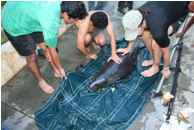
The PHVMA course offers tips on manatee emergency response. (Photo courtesy Jungle2U)
* manatee emergency response
* major causes of morbidity/mortality
following natural disasters
* wound care in the field
* CPR review in several species
* radiation and monitoring following a disaster
* field techniques for wound closure
This training is appropriate for many different disaster responders including veterinarians, nurses, physicians, students, veterinary technicians, animal health technicians, etc. Cost is free to current PHVMA and MRC members and only $25 for all others. Continuing education certification is pending for nursing CEU's, veterinary CE, and EH CEU's.
Any questions can be sent to info@phvma.com. For further information and to register, please visit www.phvma.com (Pasco Hernando Veterinary Medical Association) and scroll to the bottom of the page.
Registration is now closed for this training opportunity. Dr. Jenifer Chatfield says that because of the number of inquiries they have received, PHVMA will almost certainly schedule additional classes in the near future. Please stay tuned for information and registration.
On Line Learning
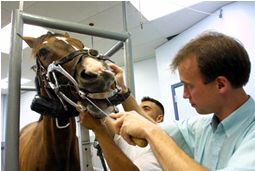
Many excellent courses can be studied on line although the overall learning inventory may be less than if taken from live instructors while participating in a student setting which may involve classroom learning and/or hands-on activities. One such course is FEMA’s IS-111 Livestock in Disasters. You may read the Course Overview at www.training.fema.gov
/EMIWeb/IS/is111.asp (see below) and even download the materials and take the final exam.
This Independent Study course (IS-111) is for farmers, extension agents, emergency managers and others who have interests in the livestock industry. It describes the various hazards that animals can face and how to mitigate them, as well as how to respond to an actual disaster. The livestock industry is a multi-billion dollar business that provides food for the American people as well as those overseas. It is important to insure our livestock are safe from hazards and will not suffer from the effects of hazards. This course can be downloaded from the Independent Study Web site and the test can be completed and submitted online. (CEU – 1.0)
[top]
Highlight New Jersey SART
The Focus is on Animals and Local Response
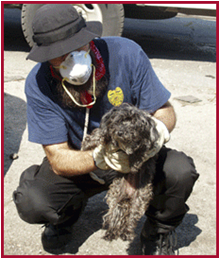
New Jersey’s Department of Agriculture (www.state.nj.us/agriculture/index.shtml) is the state agency responsible for animals in disasters. As the ESF-11 (Agriculture) it coordinates animal information and resources during disasters. It also:
- develops plans and procedures for animals in disasters
- coordinates with other agencies and
- guides County Animal Response Teams(CARTs).
New Jersey has embraced the national SART model for animal disaster response, which initially relies on local action. In theory, a CART – local people organized to help with planning and preparedness and then to help animals in disasters – reports to county Emergency Management. New Jersey wants a CART in every county, its members trained and ready to respond.
NJDA is also forming a State Animal Response Team (SART). If additional disaster assistance is needed, the SART can be activated by the NJ Office of Emergency Management and directed by the NJDA-Div. of Animal Health.
Before adopting the CART/SART model New Jersey established an Animal Emergency Working Group under Animal Health. This Group became the planning and organizational component for animals in disasters. Read their latest Newsletter (Spring 2009) at www.state.nj.us/agriculture/divisions/ah/pdf/Spring09.pdf.
Dr. Shari C. Silverman, VMD,is a Senior Veterinarian with the NJDA Div. of Animal Health. Her duties include disease prevention, investigation and response; animal emergency preparedness – planning, mitigation, response, and recovery for all animals, all hazards, all the time; and support of the NJ Standards for the Humane Treatment of Domestic Livestock.
From our Interview with Dr. Silverman | |
In recent years New Jersey has experienced a higher incidence of storm flooding and wildfires requiring the evacuation of people and animals, which included dogs, cats and horses. We estimate there are 2.22 million dogs and 2.5 million cats in the state, distributed in proportion to the human population. Other disasters that could affect us are chemical plant explosions – accidental or intentional, nuclear accidents (New Jersey has two nuclear power plants), oil refinery explosions (New Jersey has many refineries on its east coast), hurricanes, tornados, ice storms, snowstorms, bioterrorism, release of a foreign animal disease agent, chemical release, nuclear bomb release or even multiple building explosions in densely-populated areas. | |
| New Jersey's Nuclear Signature | |
 | |
These types of disasters would be exceptionally devastating, because with 8.7 million people New Jersey is the most densely populated state in the nation. In addition, we are flanked by two major cities in neighboring states, Philadelphia in Pennsylvania and New York City in New York. Following a disaster in either of these two cities, their evacuation plans call for many humans and pets to evacuate here. Few people outside our state recognize how big agriculture is here, especially in the western portion of New Jersey. The farm animal population is in excess of 1.5 million: horses, cattle, sheep, goats and pigs. There are also 7 million chickens and other poultry. The value of our animal industry is estimated at $53.1 million. The value of our horse industry alone is $283 million. | |
Dr. Shari Silverman is on the web: www.simplysoundhorse.com. Simply Sound Horse provides “supplemental therapeutic medical practices to serve as a complement to traditional western-based veterinary healthcare.” |  |
[top]
APHIS, NVS, RVF and the Navajo Nation
APHIS and the Navajo Nation conducted a National Veterinary Stockpile logistics exercise in April in the Navajo capital city of Window Rock, Arizona. It is important to Floridians because it was another step in unifying the national emergency response to an agricultural emergency, this time involving the epizootic disease Rift Valley fever.

Rift Valley fever (RVF) is an acute, fever-causing viral disease that affects domestic animals (such as cattle, buffalo, sheep and goats) and humans. It is associated with mosquito-borne epidemics during years of heavy rainfall and flooding.
Rift Valley fever (RVF) is an acute, fever-causing viral disease that affects domestic animals (such as cattle, buffalo, sheep and goats) and humans. It is associated with mosquito-borne epidemics during years of heavy rainfall and flooding.
The fever was first reported among livestock by veterinary officers in Kenya in the early 1900s. Today it is generally found in southeastern Africa, but the virus is prevalent throughout sub-Saharan Africa.
In 2000, Rift Valley fever occurred in Saudi Arabia and Yemen. This was the first case of Rift Valley fever ever identified outside Africa. The most notable epizootic incident occurred in Kenya in 1950-1951 and resulted in the death of an estimated 100,000 sheep.
According to the Centers for Disease Control, people with RVF typically have either no symptoms or a mild illness with fever, generalized weakness, back pain, dizziness, extreme weight loss and liver abnormalities. In a few patients, the illness can progress to hemorrhagic fever, encephalitis or eye diseases. Typically, patients recover within a week.
It’s rare to die from this disease but fatalities are high among livestock because there is no certifiable prevention or cure. Thus people working as veterinarians, herders or slaughterhouse workers, even travelers in infected areas, ought to take precautions by reducing the possibility of mosquito bites (repellents, bed netting, etc.) or contact with infected blood and animal parts.
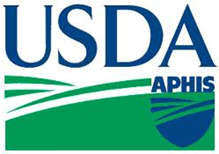
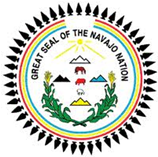
More than 28 agencies and organizations participated in the APHIS exercise with representatives serving in the roles of players, observers, evaluators or controllers.
[top]
New Web Site: SART Strategic Plan
The new Florida SART web site designed by SART Planner Michael Turner and UF’s Dr. Jiannong Xin makes reading documents like the SART Strategic Plan easy. Here are 10 questions about that document to test your recall!
(Look for answers in the Strategic Plan itself at www.flsart.org/pdf/FLORIDA%20SART%20DECLARATION%20FINAL%202010.pdf.)
- What is the lead agency for ESF-17? _________________________
- Which of these is Not Credited with helping develop SART? _____
- UF Institute of Food and Agriculture Sciences
- UF College of Veterinary Medicine
- UF College of Arts & Sciences
- US Department of Agriculture
- MARE stands for _________________________.
- Which committee manages the business and affairs of Florida SART, provides guidance and technical expertise as well as administrative support? _____
- Steering Committee
- Executive Committee
- Advisory Committee
- None of the above
- Who (by title) appoints the SART Chair and Vice Chair? _________________________
- Can the Chair of the Steering Committee double as Chair of the Advisory Board (yes or no)? _____
- Which of these SART functions is charged to the Advisory Board? _____
- Identifying needs
- Establishing priorities
- Fostering communication
- Providing technical guidance
- Increasing collaboration for the use and support of resources
- None of the above
- All of the above
- The Chair of what special committee serves as Chair of the Advisory Board and what is the Chair’s length of term (in years)?
- For the purposes of SART, organizations such as Southeast Milk, the Florida Animal Control Assn., Florida Cattlemen’s Assn. and USDA/APHIS/Wildlife Services are called _______________ _______________.
- SART members [shall or shall not] assume they are part of a response team.
Committee _______________ Term _____
Bonus Questions:
- VETS stands for: _____________________________.
- Florida’s ESF-17/ECO is (name) ______________________.
[top]
Florida State Animal Response Coalition
Redesigns Web Site, Sponsors Training
If you haven’t thought of the Florida State Animal Response Coalition lately, check their redesigned web site at www.flsarc.org/. The Coalition was formed to provide a single point of contact for trained animal emergency response: “When a hurricane, fire, tornado or other disaster threatens the state of Florida, we will be there to assist with teams of professionally trained volunteers dedicated to care for the animals that rely on us.”
- An emphasis of FL-SARC is a standardized training for volunteers, a standard that exceeds national standards. “When they are called upon to assist, you can be confident that our volunteers have completed a set of trainings that exceed the national standard. They know their job, they understand how to protect their entire family, their team members, themselves and the animals they care for during disasters.”
- FL-SARC maintains a centralized volunteer database for effective response with a “state-of-the-art volunteer management program to track and manage our volunteers. Our volunteers are able to quickly access their individual profiles to update their completed trainings and requirements, vaccinations, contact information, schedule times when they are available to assist and even maintain a list of jobs they prefer to do when responding. Our volunteer coordinators are able to instantly access that information to alert volunteers to an upcoming response, remind them of training requirements that need attention, alert them to upcoming training opportunities, mock disaster drills and more. Our volunteer information is maintained offsite in a secure, protected database. In the event of a major hurricane, wildfire or other natural disaster we can assure your information is available at a moment's notice when animals are in need of assistance.”
- FL-SARC is able to organize supplies “a multitude of equipment, trucks, trailers, generators, cages, leashes and supplies required to respond during a disaster and then getting all that equipment moved to the where it's needed is a monumental task. Where is it? How will it get there? Our coalition partners, working with individuals, groups and the State of Florida are disaster logistics specialists. They are trained and ready to move valuable resources to where they are needed.”
SARC-Sponsored Awareness Level Emergency Animal Sheltering Course
Hosted by the Humane Society of St. Lucie County and St. Lucie County Public Safety Awareness, this course is required to be able to respond with FL-SARC to work in an emergency animal shelter during declared disasters in the state of Florida.
July 30 (8:00-6:00)
St. Lucie County Division of Emergency Management / EOC
15305 Midway Road, Ft. Pierce (next to the Fair Grounds)
July 31 (8:00-6:00)
Hillsborough County Animal Services
440 North Falkenburg Road, Tampa
[top]
News and Notes


Josh Burch (l) and Brett Fulton died while working to contain the Blue Ribbon Fire in Hamilton County.
Although June/July rains have dampened the 2011 fire season they have not extinguished it entirely. We remember firefighters Josh Burch and Brett Fulton, both employed by FDACS’ Division of Forestry, who were killed fighting the Blue Ribbon Fire in Hamilton County. The Blue Ribbon Fire started on June 16. Declared contained, it flared up again on June 20.
- Josh Burch, 31, was a Forest Ranger who lived in Lake City with his wife and two children. He worked with the Division of Forestry for ten years.
- Brett Fulton, 52, began as a professional welder with the Division of Forestry 12 years ago. He has been a Forest Ranger with the Department for nine years. Fulton leaves behind a wife and two grown children in White Springs.
Two other Division of Forestry firefighters – Robert Marvin and Stephen Carpenter – were injured while attempting to assist other firefighters. Both were treated for smoke-related injuries and released.
NOTE: According to a press release from Adam Putnam, Commissioner of Agriculture, Florida’s dry weather in May and June caused extreme fire activity. Since May 1, FDACS’ Division of Forestry has battled more than 1,500 wildfires across 200,000 acres, making this period one of the busiest wildfire years in recent history. At its peak, firefighters faced more than 31 new wildfires every day.
Hurricane Update: Naming Storms & Arlene
It’s interesting to know how the National Hurricane Center names the tropical storms and hurricanes that come ashore in the Northern Hemisphere from the Atlantic Ocean. Naming storms from a list of female names began in 1953. In 1979 the list began alternating men’s and women’s names.
There are essentially six rotating lists, which means the 2011 names are the same as the 2005 names, but there are some special rules:
- Lists begin at “A” and stop at “W.” [Thus “Xavier” is out of luck…or perhaps not depending upon your point of view.]
- Names beginning with “Q” and “U” are not included. [“Quentin” and “Uberto” don’t have a chance.]
- A name is retired if a storm was particularly devastating. [Several names on the 2005/2011 list have been changed, most notably “Katrina” by Katia, “Rita” replaced by Rina and “Wilma” by Whitney.
2011 Hurricane Names
Arlene Harvey Ophelia
Bret Irene Philippe
Cindy Jose Rina
Don Katia Sean
Emily Lee Tammy
Franklin Maria Vince
Gert Nate Whitney
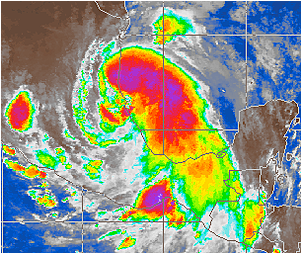
Tropical Storm Arlene
Arlene, the first named storm of the Atlantic hurricane season, resulted in at least 22 deaths as it moved across Mexico earlier this month. Arlene made landfall near Cabo Rojo with maximum sustained winds of about 62 mph and Mexican officials declared a state of emergency in both Veracruz and Mexico State.
For responders, it is instructive to review how the victims died:
- Ten people died when they were swept away trying to cross a river.
- One motorist died when trying to drive through a rain-swollen stream.
- Six people died in mudslides.
- Five people were electrocuted: three after touching downed power lines and two were struck by lightning.
Your Member Information
It is that time! Please check the listing for your SART Member Information. It takes two minutes…max. Verify that your telephone and email addresses, your title and affiliation are correct, that they have not changed.
Simply go to SART’s Home page at www.flsart.org. Sign in to the Member Area and click “View Member Information” for the alphabetical directory. If your info is correct, great. If it needs to be changed, return to the Member Area and click “Edit My Member Information.” Type the corrected information into the form and click “Submit.” Quick. Easy. Stay up-to-date!
Hackers Tag SART
Apparently, an email sent through the SART List-Serv last month contained an attachment that redirected messages to non-responder sites. SART Planner Michael Turner (FDACS) and Webmaster Dr. Jiannong Xin (U.F.) are instituting new procedures for messages sent through the SART List-Serv to be approved and verified. It is important that this channel of communication remain open to animal and agricultural responders as it is a vital means of sharing information about training and emergency situations.
Largest Cat Hoarding Case Busted in High Springs
It is one of the largest cases of animal hoarding in the U.S. and it took place in High Springs (Alachua County) in June. Seized were nearly 700 cats.
HSUS spokesperson Jordan Crump said the case of Haven Acres Cat Sanctuary at 21023 NW 168th Lane is “the largest cat hoarding cases” she has ever seen.
Alachua County Animal Services Director David Flagler said the investigation began in late May when animal service officers inspected and found a dead cat in a cage and others that appeared to be sick. Flagler said the on-going investigation focuses on animal neglect and cruelty. A forensic veterinary team is involved and civil code violations are also possible, he added.
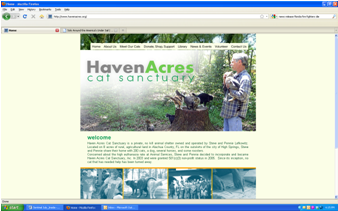 | HSUS spokesperson Jordan Crump said the case of Haven Acres Cat Sanctuary at 21023 NW 168th Lane is “the largest cat hoarding cases” she has ever seen. Good intentions and a sophisticated web site [www.havenacres.org/] are simply not sufficient to provide care for hundreds of homeless animals. |
The sanctuary was owned by Steve and Pennie Lefkowitz, who several years ago – over the objections of the City of High Springs and most neighbors who said it was a public nuisance and a source of pollution – received a special zoning exception from the county commission to operate Haven Acres.
The county commission believed Haven Acres could comfortably accommodate 200 cats. Pennie Lefkowitz said they made an effort to cut the number to the agreed-upon level but that “people dumped cats right and left.” She also claimed the operation cost about $33,000 per year.
Veterinarians from Animal Services and the University of Florida College of Veterinary Medicine along with staff from the Humane Society, United Animal Nations and the American Society for the Prevention of Cruelty to Animals assisted in the evaluation and removal of the cats. David Flagler said that a number of the animals will need to be euthanized but the mission was to save as many as possible.
[top]
About the SART Sentinel |
The SART Sentinel is an e-mail newsletter prepared monthly by the members of the Florida State Agricultural Response Team. Past issues of the Sentinel are archived on the Florida SART Web Site www.flsart.org. If you have a story or photo that you would like to have considered for publication in the SART Sentinel, please contact the editors. Editor: Rick Sapp, PhD, Technical Writer, Florida Department of Agriculture & Consumer Services, Division of Animal Industry rsa5@cox.net Associate Editor: Joe Kight, State ESF-17 Coordinator, Florida Department of Agriculture & Consumer Services, Division of Animal Industry Joe.Kight@freshfromflorida.com [top] |
|
|

